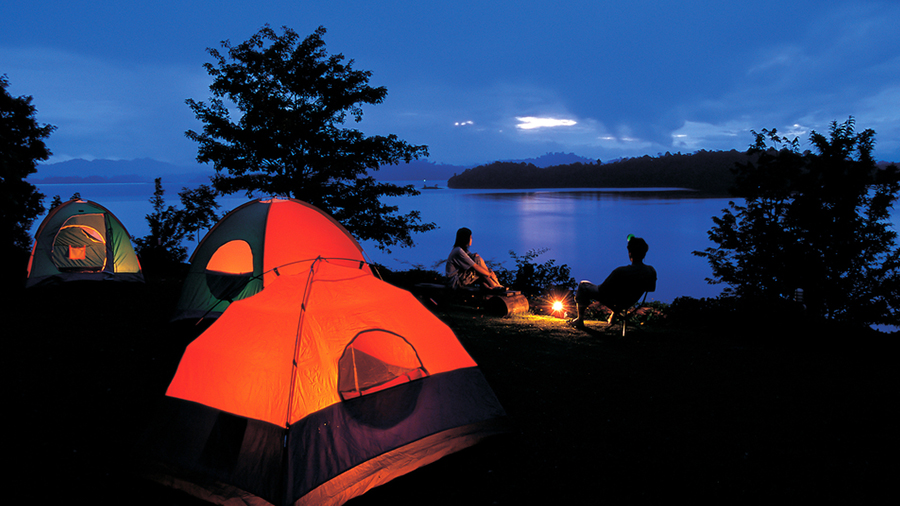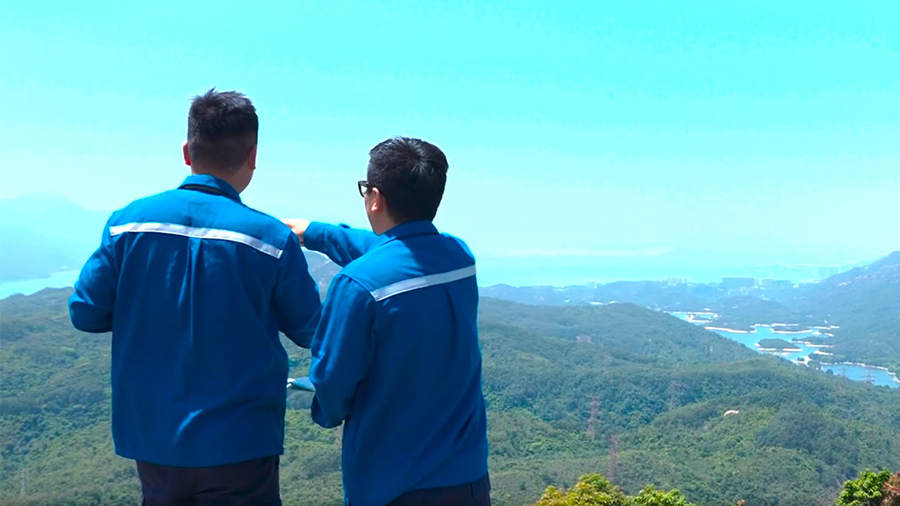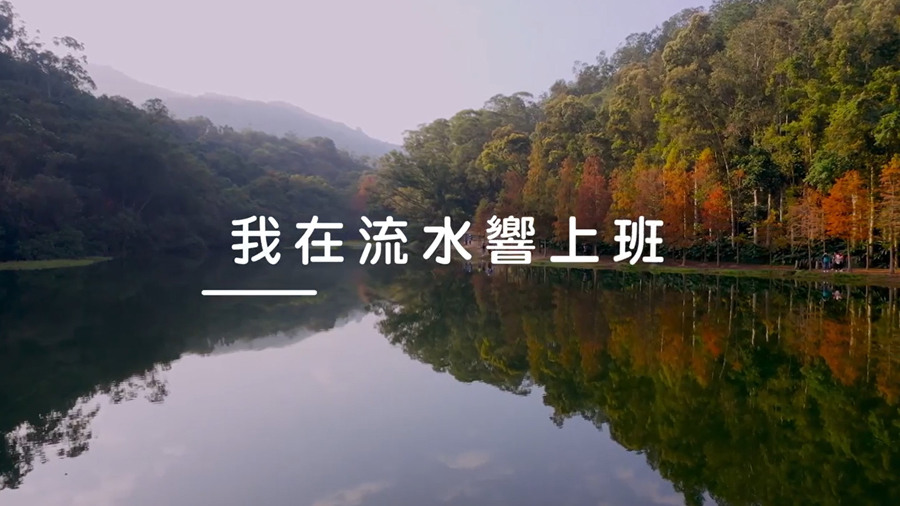#CountryParks
Search Result: 6
The 25th country park in Hong Kong - The Robin's Nest Country Park has been established! Country Park's Overview The Robin's Nest Country Park, occupying an area of about 530 hectares at Sha Tau Kok in Northeastern New Territories, lies on a continuum of mountain ridges stretching from the Shenzhen Wutong Mountain Scenic Area to the north and Pat Sin Leng Country Park to the south. Natural habitats in the park remain untouched due to its remoteness at the border. The Robin's Nest Country Park is characterised by the rich floral and faunal diversity, including various species of conservation interest. The abandoned Lin Ma Hang Lead Mine in the park supports one of the most important bat colonies in Hong Kong and was designated as a Site of Special Scientific Interest. Part of the Robin's Nest Country Park falls within the former Frontier Closed Area and harbors a diverse collection of war relics. Lin Ma Hang Lead Mine was one of the most extensive mining systems in Hong Kong's mining history. Together with the MacIntosh Forts, Grade-2 historic buildings, they are the key heritage resources in the Robin's Nest Country Park. Hiking Trails There are two hiking trails in the Robin's Nest Country Park, namely Robin's Nest Country Trail and Lin Ma Hang Country Trail. Information boards, waymarks and distance posts are installed along the trails. Viewing points and interpretation panels are also set up at suitable locations to facilitate appreciation of nature and cultural heritages. Transportation Information To the start point of Robin's Nest Country TrailTake public transport to Tam Shui Hang Bus Station at Sha Tau Kok Road – Shek Chung Au, and walk along Shan Tsui Village Road for about 30mins to the start point of Robin’s Nest Country Trail. Green Minibus route – 55K Kowloon Motor Bus (KMB) routes – 78K To the start point of Lin Ma Hang Country TrailTake minibus at Sheung Shui Station and get off at Lin Ma Hang Road before the Frontier Closed Area. Walk along the connecting path for 20mins to arrive at the Lin Ma Hang Village. Green Minibus route – 59K (Please take the one towards Lin Ma Hang at Sheung Shui MTR Station)Please note a section of Lin Ma Hang Road near Lin Ma Hang Village is within the Frontier Closed Area (FCA). Visitors to/from Lin Ma Hang Village who wish to take minibus route 59K are required to possess a valid Frontier Closed Area Permit, or they have to get on or off before the FCA and use the connecting path to hike to Lin Ma Hang Village. Hikers should take note of the waymarks onsite. Please refer to the webpages on Closed Area Permit and the New FCA Boundary of the Hong Kong Police Force for information on access to FCA. (Video in Chinese only) For more details of the Robin's Nest Country Park, please visit the website of the Agriculture, Fisheries and Conservation Department.
Sai Kung Hoi Arts Festival is officially opened on 16 November! From now until 15 January 2023, you are welcome to visit Yim Tin Tsai and Sharp Island to enjoy 9 unique pieces of local artwork, and to join the in-depth guided tours and exciting activities. Island Hopping Kaito Experience (Festival exclusive) The Sai Kung Hoi Arts Festival this year is launched with Yim Tin Tsai as the centre and extended to Sharp Island. To facilitate travel between the two islands, there will be island hopping kaito during the Arts Festival period to let visitors enjoy the special and exclusive island hopping experience in Hong Kong. >>>Pre-order Island Hopping Kaito Tickets Suggested visiting routes Sai Kung Hoi Arts Festival has 9 artworks on both islands. You can visit both islands in one day by the specially designed Island Hopping Kaito Experience. The following are the suggested island hopping routes: ISLAND HOPPING ROUTE 1: 4 to 5 HOURS RELAXING ROUTE This route allows you to see all the artworks in Yim Tin Tsai. At Sharp Island, you can see the artwork “Ocean Says” near the Sharp Island pier, 2 to 4 pieces of ceramic artwork of “A Grand Pineapple Bun Tour” near the starting point of the Sharp Island Country Trail from tombolo side, and have a distant view of the artwork “Moonrise in Daylight”, located on the other side of the tombolo, from the area around the pier. ISLAND HOPPING ROUTE 2: 7 to 8 HOURS FULL EXPERIENCE ROUTE This route allows you to enjoy all the artworks on Sharp Island and Yim Tin Tsai. It takes about 2 hours to hike the full Sharp Island Country Trail (round-trip), and it requires a certain level of physical fitness. Please plan your journey according to your physical conditions, and may plan for a shorter route as appropriate. Other exciting activities Visitors also can join the in-depth guided tours and other exciting activities, such as Live Action Role-Playing Game"War on Sharp Island", Zen Rock Under The Moon, and Salt Making Workshop. Please refer to the Sai Kung Hoi Arts Festival website for more activity details and application.
There are 41 campsites designated by the Agricultural, Fisheries and Conservation Department at country parks across Hong Kong, such as the Lau Shui Heung Campsite, the Lead Mine Pass Campsite and the Hok Tau Campsite. The Pui O Campsite and the Chong Hing Water Sports Centre are both located at Lantau Island and managed by the Leisure and Cultural Services Department. Other than these governmental campsites, there are some camping services and campsites provided by non-government organisations.Yet, camping sites designated by the authority are more preferable when you are planning for your camp. There are plenty of choices among these designated camping sites, get set and explore the nature fun now! Campsites managed by the Leisure and Cultural Services DepartmentPui O Campsite Chong Hing Water Sports Centre Campsites designated by the Agricultural, Fisheries and Conservation DepartmentLau Shui Heung Campsite Lead Mine Pass CampsiteHok Tau Campsite Rotary Club CampsiteChung Pui Campsite Twisk CampsiteSam A Chung Campsite Ho Pui CampsiteTung Ping Chau Campsite Tin Fu Tsai CampsiteWan Tsai South Campsite Nam Shan CampsiteWan Tsai West Campsite Pak Fu Tin CampsiteCheung Sheung Campsite Shap Long CampsiteHau Tong Kai Campsite Lo Kei Wan CampsiteTai Tan Campsite Shek Lam Chau CampsiteWong Shek Campsite Tai Long Wan CampsitePak Tam Au Campsite Kau Ling Chung CampsiteSai Wan Campsite Man Cheung Po CampsiteLong Ke Wan Campsite Nga Ying Kok CampsitePak Lap Campsite Tsin Yue Wan CampsiteYuen Ng Fan (Nam Fung Wan) Campsite Ngong Ping Campsite (Lantau)Po Kwu Wan Campsite Kong Ha Au CampsiteYee Ting Campsite Shek Pik CampsiteShui Long Wo Campsite Ham Tin Wan CampsiteNgong Ping Campsite (Ma On Shan) Tai Mong Tsai CampsiteTung Lung Chau Campsite *Due to extremely low precipitation in the last twelve months, water supply is becoming a problem at many campsites. Campers may need to bring along water for drinking and cooking purposes. Please check before you plan a camp. And please refer to "Camping Code and Regulations". Other non-government organisations providing tent camping servicesHong Kong Girl Guides Association Pok Hong Campsite Scout Association of Hong Kong Shatin Scout Centre Scout Association of Hong Kong Gilwell CampsiteScout Association of Hong Kong Choi Chee Ming Luen Kwong Scout CentreHong Kong Playground Association Tung Chung Outdoor Recreation Camp YMCA of Hong Kong Lamma Island Outdoor Centre Tung Wah Group of Hospitals Ma Tso Lung Campsite Camps/Centres of subvented non-government organisations Chinese YMCA of Hong Kong Y's Men-YMCA Wong Yi Chau Youth Camp Hong Kong Playground Association Silvermine Bay Outdoor Recreation Camp Scout Association of Hong Kong Tai Tam Scout Centre Scout Association of Hong Kong Tung Tsz Scout Centre Scout Association of Hong Kong Pak Sha Wan Tam Wah Ching Sea Activities Centre For more details, please refer to the AFCD website or LCSD website
This story is only available in Chinese. For more information on the subject, please visit the Facebook page of Agriculture, Fisheries and Conservation Department.
This story is only available in Chinese. For more information on the subject, please visit the Facebook page of Hong Kong Country Parks.
Hiking is a physical activity with both physical and mental benefits. It can improve your physical fitness and help you relax. You may need many different skills for any particular sport, and each sport, including hiking, has its unique skills. If you can master the skills of hiking, you can diminish energy loss and minimise the chance of getting hurt. Here are some hiking tips by Enjoy Hiking: Uphill Maintain a natural pace and avoid making very large strides. Avoid climbing at high speed. Don't rest too frequently or for too long. When you feel tired, slow down instead of stopping. Tread only on secure stable ground, where there is enough foot room. Use the strength of your legs to climb. Avoid pulling yourself up by grasping small trees or branches, as they may break leading to a fall. Keep your upper body straight. When going up very steep slopes, don't go straight ahead. Move sideways and work your up in a series of zigzags. Downhill Never run downhill ―this is a certain way to have a dangerous fall. Tread only on secure stable ground, with enough foot room. Avoid treading on wet slippery ground, especially wet clay or grasses. But if there is no other way, proceed with caution and keep your body low. Use the strength of your legs to descend. Avoid sliding down by grasping small trees or branches. This indicates you are half out of control. Branches can break and, even if they don't, you will damage the vegetation. Keep your upper body straight. When moving down very steep slopes, move sideways and work down in a series of zigzags. Food and Drink Never eat or drink while moving. Relax to take refreshments. Don't hurry with your food or drink. Never drink untreated water from hill streams or eat any wild plants or mushrooms. Don't consume icy drinks immediately after a long hike, when your body temperature is still high. Never drink alcohol during a hike. Foot Care Wear suitable hiking shoes. Wear new shoes on level ground a few times before going on a serious hike. This will ensure the surface material is soft and the shoes are comfortably worn in to the shape of your feet. Bootlaces should not be too tight. Wear two pairs of socks made of soft, fluffy and absorbent material. Trim your toenails, and try to keep your feet clean and dry. Stop walking if your feet are uncomfortable. Inspect them and treat any wounds promptly. If there are signs of blisters, put a plaster on the affected area. Blisters should be dressed with an absorbent plaster that eliminates moisture. Serious blisters should be treated with antiseptic. Pierce the blisters with a sterile pin and squeeze out any moisture. Avoid touching the wounds directly, and cover them with an antiseptic dressing right away. For soreness or cramps in the legs, massage the leg muscles. If possible, soak feet in warm water, or use a menthol-based heat rub ointment. Moreover, to be well prepared for your next hiking trip, you may check out the following website for more information. A Guide for Hikers (Centre for Health Protection) Safety Hints on Hiking (Hiking Scheme) Source: AFCD Enjoy Hiking website











